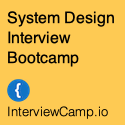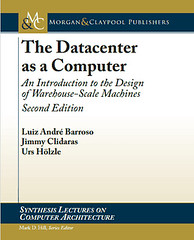
Gordon Ramsay is a world renowned chef with a surprising amount to say on software development. Well, he says it about cooking and running a restaurant, but it applies to software development too.
You may have seen Gordon Ramsay on one of his many TV shows. Hell's Kitchen is a competition between chefs trying to win a dream job: head chef of their own high-end restaurant. On this show Ramsay is judge, jury, and executioner. And he chops off more than a few heads. Kitchen Nightmares is a show where Ramsay is called in by restaurant owners to help turn around their failing restaurants. On this show Ramsay is there to help.
If you just watch Hell's Kitchen you will likely conclude Ramsay is one of the devil's own helpers ("ram" is the symbol of the devil and "say" means he speaks for the devil: Ramsay). Ramsay screams, yells, cusses, belittles, and throws tantrums even a 7 year old could learn from. Then he does it all over gain just for spite. In Hell's Kitchen there's no evidence at all of why Ramsay is such a respected chef. He is just a nasty man.
Now if you watch the British version of Kitchen Nightmares you will see a slightly different side of Ramsay, he still yells and cusses a lot, but you will also see something else: this guy seriously knows what he is doing. The depth of his knowledge in all phases of the restaurant business is immediately apparent as he methodically works to fix what's broken.
Ramsay knows how to run a profitable restaurant. That's one of his key skills. Anyone can lose money running a restaurant, the secret is knowing how to make money running a restaurant. Apparently if, you run it right, a restaurant can make a lot of money. It can also lose a lot of money.
How does Ramsay teach people how to run a profitable restaurant? It's not what you may be thinking. He isn't about cutting costs, shoddy work, and cheap labor. Ramsay is all about profit through excellence and skill. That's what attracts people to a restaurant and keeps them coming back...and back...and back.
It's great fun to watch Ramsay cuss and cajole his way through the entire restaurant staff putting his finger directly on problems, creating inspired solutions, and then mentoring the staff and owners through the transformations needed to become a good restaurant.
While watching you have to wonder how people who invested their life savings in a restaurant could be so screwed up. But then you realize we are all screwed up at one time or another. From the distance TV provides everyone can look bad. Running a restaurant is hard and it's oh so easy to get in a rut.
And if you were stuck in a rut who would you want to give you a lift out? A super hero? How about Super Chef instead?
Sadly, in the real world when you run into trouble a super hero with curiously sharp knives doesn't come to your rescue. In the real world the same uninspired people apply the same uninspired strategies until losses cause the heart stoppage that blissfully puts an end to the torture. But this isn't the real world, this is TV. And on TV you see Ramsay slap the electroshock paddles on the restaurant and bring it back to life. It's wondrous to see both the restaurant and the people come back to life.
What's fun is when Ramsay revisits the restaurant after six or so weeks to see how the restaurant is doing. Most of the time the restaurant is doing better. There are a lot of happy customers and money is being made. And they don't slavishly follow what Ramsay said to do either. Instead, Ramsay taught them the principles of running a restaurant and then they learned how to apply the principles to their own situation.
Sometimes on Ramsay's reinspection tour he finds the restaurant has closed down or isn't doing as well as you might expect. The reasons for failure vary. Sometimes the initial problems were too great. One guy made a bad deal on a lease so it didn't matter in the end if the restaurant improved or not. Sometimes people are simply stubborn and won't change their ways. An example of this scenario was a fancy French restaurant where the owner gave the chef total control to cook whatever he wanted. It turns out the chef was addicted to complex foods that prevented the restaurant from getting its Michelin star.
While watching Ramsay work his magic in Kitchen Nightmares I began to see how similar a kitchen team was to a software team. Running a successful kitchen is a high stress, high work load, high quality, high variability environment where teamwork and communication are key. Sounds like software development to me.
Here are some of the notes I took on Ramsay's restaurant turn around strategies. I'll leave extending the metaphor into the software world in your capable hands:
Click to read more ...
 Wednesday, August 28, 2013 at 9:09AM
Wednesday, August 28, 2013 at 9:09AM 





















